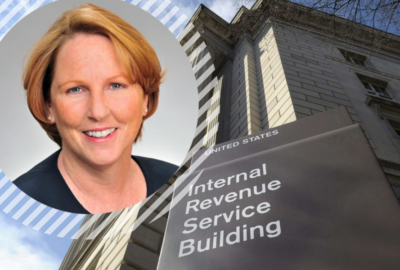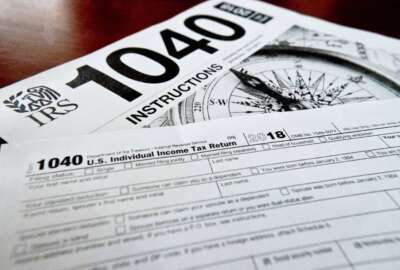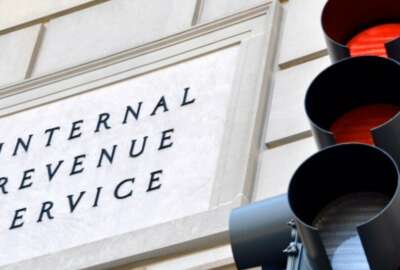

The IRS, after getting $80 billion this summer to rebuild its workforce and modernize its legacy IT, is coming up with a plan to make the most of this funding o...
The IRS, after getting $80 billion this summer to rebuild its workforce and modernize its legacy IT, is coming up with a plan to make the most of this funding over nearly a decade.
The IRS has created an Inflation Reduction Act (IRA) Transformation and Implementation Program Office to coordinate the spending, according to a recent report from the Treasury Inspector General for Tax Administration. President Joe Biden signed the IRA in August 2022.
“Specifically, IRS leadership wants to use IRA funding to strengthen its ability to deliver on this mission while also aspiring to achieve improved levels of service and compliance through transformation,” TIGTA wrote. “This includes implementing a new customer-centric operating model that seamlessly integrates service and compliance to serve all taxpayers equitably and in the way they want to be served.”
The program office has four workstreams for transformation efforts under the IRA: enforcement, human capital, IT and taxpayer services.
The Treasury Department and the IRS have also stood up a steering committee to oversee the IRS’ transformation efforts under the Inflation Reduction Act. The steering committee includes senior leadership from both Treasury and IRS, and meets weekly to discuss the next steps for IRA implementation.
The TIGTA report provides an early glimpse into how the IRS is getting its arms around the massive spending package, and the agency’s next steps to make the legislation’s goals a reality.
The IRS plans to soon provide further insight into those spending plans. IRS officials told TIGTA they’re currently developing an IRA spending plan for the rest of the fiscal year.
Meanwhile, Treasury Secretary Janet Yellen in August directed the IRS to produce an operational plan with details of how the additional IRA funding will be spent. That report is due in mid-February.
Yellen also expects IRA funding will translate into a much higher level of taxpayer service during the upcoming filing season.
But even with an unprecedented surge in funding, the IRS sees challenges building up its workforce quickly, given how many current employees are expected to retire or leave the agency over the coming years.
The IRS set a goal of hiring about 19,000 positions in fiscal 2023, but much of this hiring will only offset the number of employees expected to retire or leave the agency.
IRS human capital experts told TIGTA it expects a net increase of about 5,000-to-10,000 employees to its workforce by the end of the fiscal year.
“A continued challenge the IRS faces is having to evaluate a high number of applicants in order to find successful candidates both willing to accept the job offer and also be able to pass the required background checks,” TIGTA said.
The IRS hired more than 6,000 new employees in 2021. They represent about 31% of the total number of applicants who received a tentative job offer from the agency.
The agency’s hiring stats showed improvement in 2022, when the IRS hired more than 19,000 employees — about 41% of the total number of applicants who received a tentative job offer.
In total, the IRS received nearly 389,000 job applications in 2021, and more than 565,000 applications the following year.
The National Taxpayer Advocate, in her annual report to Congress last week, found the IRS needs to address staffing shortages in its Human Capital Office before it can take on the hiring surge expected under the IRA.
In the meantime, however, the IRS is relying on the Office of Personnel Management and contractors to help increase its ability to hire.
OPM, through an interagency agreement, is helping the IRS hire up to 3,000 revenue agents.
One contractor is helping the IRS with the hiring process by posting job announcements, preparing lists of qualified candidates and making tentative job offers. Another is assisting the IRS personnel security staff by handling background investigations for new hires.
The final version of the Inflation Reduction Act didn’t grant the IRS the direct hire authority it requested.
However, TIGTA found that OPM approved direct hire authority in November 2022 for the IRS to onboard up to 10,000 enforcement and taxpayer services employees more quickly through fiscal 2027.
“This authority would enable the IRS to satisfy mission-critical hiring needs and support significant changes in tax law, customer outreach, and other highly complex tax compliance efforts,” the TIGTA report states.
OPM also granted the IRS direct hiring authority to bring up to 4,500 operations support employees more quickly through the end of fiscal 2024. TIGTA said these hires would implement IT modernization, improve service and “transform the way the IRS does business.”
The IRS also didn’t receive the critical pay authority it requested in the IRA. Critical pay authority would have allowed the IRS to increase the basic pay for certain positions in order to recruit and retain experts.
TIGTA found “it is difficult to determine the impact of not having this authority because IRS officials said they didn’t know that positions could have been filled using critical pay authority.”
Aside from modernizing the way it does business, the IRS must also finalize a slew of updates ahead of this year’s tax filing season.
The IRS needs to create or revise 24 tax forms, 29 tax form instructions and three publications. The IRS must also update 20 IT systems in preparation for the fiscal 2023 filing season.
These tax filing changes are tied to the IRA’s new and expanded energy credits for homeowners, businesses, vehicles, fuel and manufacturing.
That workload, however, doesn’t come close to the more than 450 forms and 140 IT systems the IRS had to update in 2018 to comply with the Tax Cuts and Jobs Act championed by the Trump administration.
The IRS is in a better place to take on modernization, after spending much of last year reducing a pandemic-era backlog of tax returns.
The IRS, according to the National Taxpayer Advocate, reduced its backlog of unprocessed paper tax returns to 400,000 individual returns and 1 million business returns.
The IRS started 2022 with an unprocessed paper backlog of 4.7 million original individual returns and 3.2 million original business returns.
Agency officials told TIGTA they hadn’t yet used IRA funding on efforts to reduce the backlog, instead relying on funds from the American Rescue Plan. However, officials said the IRS would tap into IRA funds to help reduce the backlog.
The IRS is also looking at IRA funding to scale up efforts that began last year to streamline the processing of paper tax returns — a workload the National Taxpayer Advocate has called the IRS’ “kryptonite.”
IRS employees still manually transcribe millions of paper tax returns every year. But the agency launched a pilot in fiscal 2022 to scan some paper tax returns — specifically those prepared using tax software, but printed and mailed, rather than submitted online.
By the end of September 2022, the pilot program was a success for about 70% of the more than 134,500 tax returns scanned. The IRS routed the remaining 30% of these returns to its Error Resolution System for manual processing by IRS employees.
In the upcoming 2023 Filing Season, the IRS hopes to automate the scanning of millions of individual paper returns into a digital copy, which will result in faster processing and faster refunds for taxpayers.
TIGTA said the IRS didn’t meet its goal of awarding a contract for this work by October 2022. However, the watchdog said the IRS has identified a vendor and is in the process of awarding the contract.
The agency is also taking steps to allow taxpayers to respond to IRS tax notices online, rather than responding by mail and contributing to the agency’s backlog of paper correspondence.
IRS officials told TIGTA the agency is ahead of schedule to bring this functionality online for the seven most common notices the IRS sends. Agency officials expect to have this capability ready for an additional 10 notices before the end of January 2023.
Copyright © 2024 Federal News Network. All rights reserved. This website is not intended for users located within the European Economic Area.
Jory Heckman is a reporter at Federal News Network covering U.S. Postal Service, IRS, big data and technology issues.
Follow @jheckmanWFED



